Don’t be intimidated by this opera cake recipe! While a little time-consuming, this cake is worth every bit of effort to make! With layers of almond sponge (also called joconde) brushed with homemade coffee syrup and filled with a coffee-flavored French buttercream and chocolate ganache, this cake is not just decadent but will melt in your mouth. While this cake has a few extra steps than a standard cake recipe, the steps are straightforward and easy to make ahead of time.
Opera cake is a classic French cake with unclear origins, but it’s believed that the cake was created by Cyriaque Gavillon and popularized at the French pastry shop Dalloyau in 1955. Some believe this cake got its name as the layers resemble the levels of an opera theatre. It is the ultimate coffee lover’s dessert recipe and is always a show stopper. Want another French dessert recipe? Try my mille feuille recipe, macaron recipe, or eclairs recipe.
What You Need to Make This Recipe
Eggs — this opera cake recipe requires quite a lot of eggs. Make sure you have enough on hand!
Almond flour — opera cake traditionally consists of light almond sponge cake layers. For that, you’ll need almond flour. Make sure to get almond flour and not almond meal or the texture will not be correct once baked.
Sugar — this cake uses powdered sugar as well as regular sugar. If you do not have any powdered sugar on hand, here’s my guide on how to make powdered sugar.
Instant espresso powder — for that classic coffee flavor throughout the cake, you’ll need espresso powder to make the coffee syrup and coffee buttercream. Espresso powder is concentrated instant coffee, so it has a stronger, darker flavor than regular instant coffee.
Alcohol — you can use brandy or cognac in the coffee syrup.
Chocolate — I like using semi-sweet chocolate for the cake’s chocolate glaze but feel free to swap it for milk chocolate or dark chocolate if you prefer.
Butter — make sure to purchase unsalted butter as salted butter varies in salt content between different brands. Also, don’t forget to set the butter out ahead of time as you want softened butter, so it mixes well into the coffee buttercream.
How to Make Opera Cake
1. In a large mixing bowl, beat the eggs on medium-high speed until foamy. Add the almond flour and sift in the powdered sugar. Beat until pale and thickened, then sift in the flour and beat just until combined.
2. In a separate mixing bowl with clean beaters, beat the egg whites until frothy, then slowly add the sugar as the mixer runs. Continue beating until stiff peaks form, then fold the egg whites into the flour mixture in three batches. Fold in the melted butter and pour into a buttered and lined 17×11-inch jelly roll pan. Bake for 8 to 10 minutes before inverting it to a cooling rack.
3. To make the coffee buttercream, beat the egg yolks on medium-high speed in a mixer until thickened. Meanwhile, combine the sugar and water in a saucepan over medium-high heat and bring to a boil until it reaches 240F. Carefully and slowly pour the sugar syrup into the egg yolks in a steady stream. Beat the egg yolk mixture until very stiff, gathering around the beater, and the outside of the bowl is barely warm to the touch.
4. Dissolve espresso powder in 1 tablespoon of water in a small bowl. Add the butter, a tablespoon at a time, to the buttercream. Beat on medium speed and slowly drizzle in the coffee. Scrape down the bowl and beat until well combined. Cover and set aside.
5. To make the chocolate glaze, bring 2 inches of water in a small saucepan to a simmer over medium-high heat. Reduce the heat to low. Combine the chocolate and butter in a large heat-proof bowl and set over the pot making sure it doesn’t touch the water. Stir the mixture until the chocolate and butter are fully melted and combined. Remove from the heat and let cool, stirring occasionally, until thickened and spreadable but still glossy.
6. Transfer the cooled cake to a cutting board. Cut a 4 ½-inch wide strip down one long side of the cake, creating two long pieces. Cut both pieces in half crosswise, creating 4 pieces.
7. Place one large rectangle on a cake plate. Brush with a third of the cooled coffee syrup. Spread half of the coffee buttercream evenly over the cake and all the way to the edges.
8. Place the two 4½-inch wide strips side-by-side on top of the buttercream. Brush with half of the remaining coffee syrup. Spread half of the chocolate glaze over the cake all the way to the edges.
9. Top with the remaining pieces of cake and brush with the remaining coffee syrup. Spread the remaining buttercream over the cake, making it as smooth as possible. Chill for 30 minutes or until the buttercream is firm on top.
10. Reheat the remaining chocolate glaze, just until glossy again, not hot. Place 2 tablespoons in a piping bag or the corner of a ziptop bag and set aside. Spread the remaining glaze into a thin, even layer over the top of the cake, making sure you go all the way to the edge. Chill until firm, about 2 hours. When firm, trim away a bit on each side of the cake to create clean straight sides. Decorate by writing “Opera” on the top of the opera cake with the remaining glaze or pipe as desired.
Pro Tips for Making This Recipe
- If your French buttercream appears curdled after adding the butter, it most likely means the egg yolk mixture or butter was too cold when beating them together. To quickly fix this, lightly graze the top of the buttercream with a kitchen torch or hairdryer on low for a few seconds to warm the surface. You could also run the outside of the mixing bowl under hot water for a few seconds. Then, continue whipping. Repeat if needed. The mixture should turn silky and hold peaks.
- Avoid over-mixing the batter as you risk over-developing the gluten leading to a tough, dry, and dense cake. You also do not want all the egg whites to deflate.
- I highly recommend using a scale to measure your almond flour and all-purpose flour for the opera cake as it’s the most accurate method. If you add too much flour to the cake batter, you’ll have a dense cake. If you don’t have a scale, then fluff your flour with a spoon and spoon it into your cups before leveling it off with a knife. This method is the best way to measure flour without overpacking the measuring cup.
- If the flours and powdered sugar have clumps, make sure to sift them before using them. Doing so will prevent a lumpy batter.
- If your ganache is too runny, let it cool down to set or add more chopped chocolate.
- Chopping chocolate into finer pieces adds surface area for the butter to help melt the chocolate faster. The larger you chop the chocolate, the longer it’ll take to melt.
- An offset spatula will really help make assembling the cake much more manageable.
Frequently Asked Questions
Is this cake the same as Tiramisu?
While both cakes consist of coffee and cream, they are not the same. Tiramisu is Italian in origin and uses soaked ladyfingers as the base of the cake, whereas opera cake is French in origin and uses a light almond sponge cake.
Can I make this cake ahead of time?
This opera cake consists of multiple components that can be overwhelming to make all at once. You can make each component 1 to 2 days ahead of time and keep them tightly wrapped in the fridge. You can make the entire cake a few days ahead of time as well as the flavors develop more the next day as the coffee syrup has had more time to soak into the cake layers.
How to best store leftover cake?
The entire opera cake can be loosely covered and refrigerated for up to 4 days. If you have individual slices, place them in an airtight container.
Can I freeze this cake?
Yes, this opera cake is freezer-friendly. Wrap the cake tightly in plastic wrap and then tin foil before freezing for up to 3 months. When ready to eat, bring it to room temperature.
If you’ve tried this Opera Cake recipe, then don’t forget to rate the recipe and let me know how you got on in the comments below, I love hearing from you!
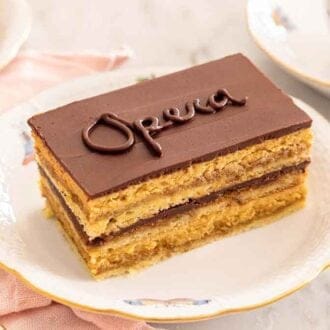
Opera Cake
Video
Equipment
- Electric or stand mixer
- Large jelly roll pan
- Parchment paper
- Saucepan
- Mixing Bowls
- Piping bag
Ingredients
For the Almond Sponge Cake:
- 4 large eggs
- 1 ¼ cups almond flour (125g)
- ¾ cup powdered sugar (90g)
- ¼ cup all-purpose flour (30g)
- 3 egg whites
- 2 tablespoons granulated sugar
- 3 tablespoons unsalted butter melted
For the Coffee Syrup:
- ¼ cup granulated sugar (50g)
- 2 teaspoons instant espresso powder
- ¼ cup water (60ml)
- ¼ cup brandy or cognac
For the Chocolate Glaze:
- 8 ounces semi-sweet chocolate finely chopped (225g)
- 7 tablespoons unsalted butter cubed (100g)
For the Coffee Buttercream:
- 2 teaspoons instant espresso powder
- 4 tablespoons hot water divided (60ml)
- ½ cup plus 2 tablespoons granulated sugar (125g)
- 6 egg yolks
- 1 cup unsalted butter softened (227g)
Instructions
For the Almond Sponge Cake:
- Preheat the oven to 425F. Butter a 17x11-inch jelly roll pan or rimmed baking sheet. Line with parchment paper and butter again and lightly flour.
- In a large mixing bowl, beat the eggs on medium-high speed until foamy. Add the almond flour and sift in the confectioners’ sugar. Beat until pale and thickened, about 3 minutes. Sift in the flour and beat just until combined.
- In a separate mixing bowl with clean beaters, beat the egg whites on high speed until frothy, about 1 minute. While beating, slowly add the sugar. Continue beating until stiff peaks form, about 3 minutes. Fold the egg whites into the flour mixture in three batches.
- Fold in the melted butter. Pour the batter into the prepared pan and gently smooth it into an even layer.
- Bake for 8 to 10 minutes or until golden brown and springy to the touch. Run a knife around the edges of the cake to loosen from the pan. Invert onto a wire cooling rack and carefully peel off the parchment paper. Let cool completely.
For the Coffee Syrup:
- In a small saucepan, whisk together the sugar and espresso powder. Whisk in the water and brandy. Place over medium heat and bring to a simmer, stirring occasionally, until the sugar is dissolved. Remove from the heat and let cool.
For the Chocolate Glaze:
- In a small pot, bring 2 inches of water to a simmer over medium-high heat. Reduce the heat to low.
- Combine the chocolate and butter in a large heat-proof bowl and set over the pot making sure it doesn’t touch the water. Stir the mixture until the chocolate and butter are fully melted and combined. Remove from the heat and let cool, stirring occasionally, until thickened and spreadable but still glossy. Make the buttercream while it cools.
For the Coffee Buttercream:
- In a small bowl, dissolve espresso powder in 1 tablespoon of water. Set aside.
- In the bowl of a stand mixer fitted with the whisk attachment, add the egg yolks. Beat on medium-high speed until thickened, about 6 minutes.
- Meanwhile, combine the sugar and the remaining 3 tablespoons of water in a medium saucepan and place over medium-high heat. Swirl occasionally until the sugar is dissolved. Insert a candy thermometer, and bring to a boil.
- Continue boiling the sugar until it reaches 240F. Immediately remove from the heat.
- With the mixer running, carefully and slowly pour the sugar syrup into the egg yolks in a steady stream. Beat the egg yolk mixture on medium-high speed until very stiff, gathering around the beater, and the outside of the bowl is barely warm to the touch, about 10 minutes.
- Decrease the speed to medium and add the butter, a tablespoon at a time, waiting a few seconds between each addition. (If your butter feels too cold, squeeze the piece between your fingers to warm them a bit before adding to the bowl.)
- Beat on medium speed until the buttercream is spreadable and smooth, about 3 minutes. While beating, slowly drizzle in the coffee. Scrape down the bowl and beat until well combined. Cover and set aside.
For the Assembly:
- Transfer the cooled cake to a cutting board. Cut a 4 ½-inch wide strip down one long side of the cake, creating two long pieces. Cut both pieces in half crosswise creating 4 pieces (2 large rectangles and 2 thinner strips).
- Place one large rectangle on a cake plate. Brush with a third of the cooled coffee syrup. Spread half of the coffee buttercream evenly over the cake and all the way to the edges.
- Place the two 4½-inch wide strips side-by-side on top of the buttercream. (The seam will be covered by the next layer.) Brush with half of the remaining coffee syrup. Spread half of the chocolate glaze over the cake all the way to the edges.
- Top with the remaining pieces of cake and brush with the remaining coffee syrup. Spread the remaining buttercream over the cake making it as smooth as possible. Chill for 30 minutes or until the buttercream is firm on top.
- Reheat the remaining chocolate glaze for 10 to 15 seconds in the microwave or over simmering water, just until glossy again not hot. Place 2 tablespoons in a piping bag or the corner of a ziptop bag and set aside. Spread the remaining glaze into a thin even layer over the top of the cake, making sure you go all the way to the edge. (Don’t worry if it drips over the side a bit.) Chill until firm, about 2 hours.
- When firm, trim away a bit on each side of the cake to create clean straight sides. Rewarm the glaze in the piping bag with your hands or run warm water over it. Snip the tip of the bag off and decorate by writing “Opera” on the top of the cake, or pipe as desired. Cake can be loosely covered and refrigerated for up to 4 days.
Notes
- If your French buttercream appears curdled after adding the butter, it most likely means the egg yolk mixture or butter was too cold when beating them together. To quickly fix this, lightly graze the top of the buttercream with a kitchen torch or hairdryer on low for a few seconds to warm the surface. You could also run the outside of the mixing bowl under hot water for a few seconds. Then, continue whipping. Repeat if needed. The mixture should turn silky and hold peaks.
- Avoid over-mixing the batter as you risk over-developing the gluten leading to a tough, dry, and dense cake. You also do not want all the egg whites to deflate.
- I highly recommend using a scale to measure your almond flour and all-purpose flour as it’s the most accurate method. If you add too much flour to the cake batter, you’ll have a dense cake. If you don’t have a scale, then fluff your flour with a spoon and spoon it into your cups before leveling it off with a knife. This method is the best way to measure flour without overpacking the measuring cup.
- If the flours and powdered sugar have clumps, make sure to sift them before using them. Doing so will prevent a lumpy batter.
- If your ganache is too runny, let it cool down to set or add more chopped chocolate.
- Chopping chocolate into finer pieces adds surface area for the butter to help melt the chocolate faster. The larger you chop the chocolate, the longer it’ll take to melt.
- An offset spatula will really help make assembling the cake much more manageable.



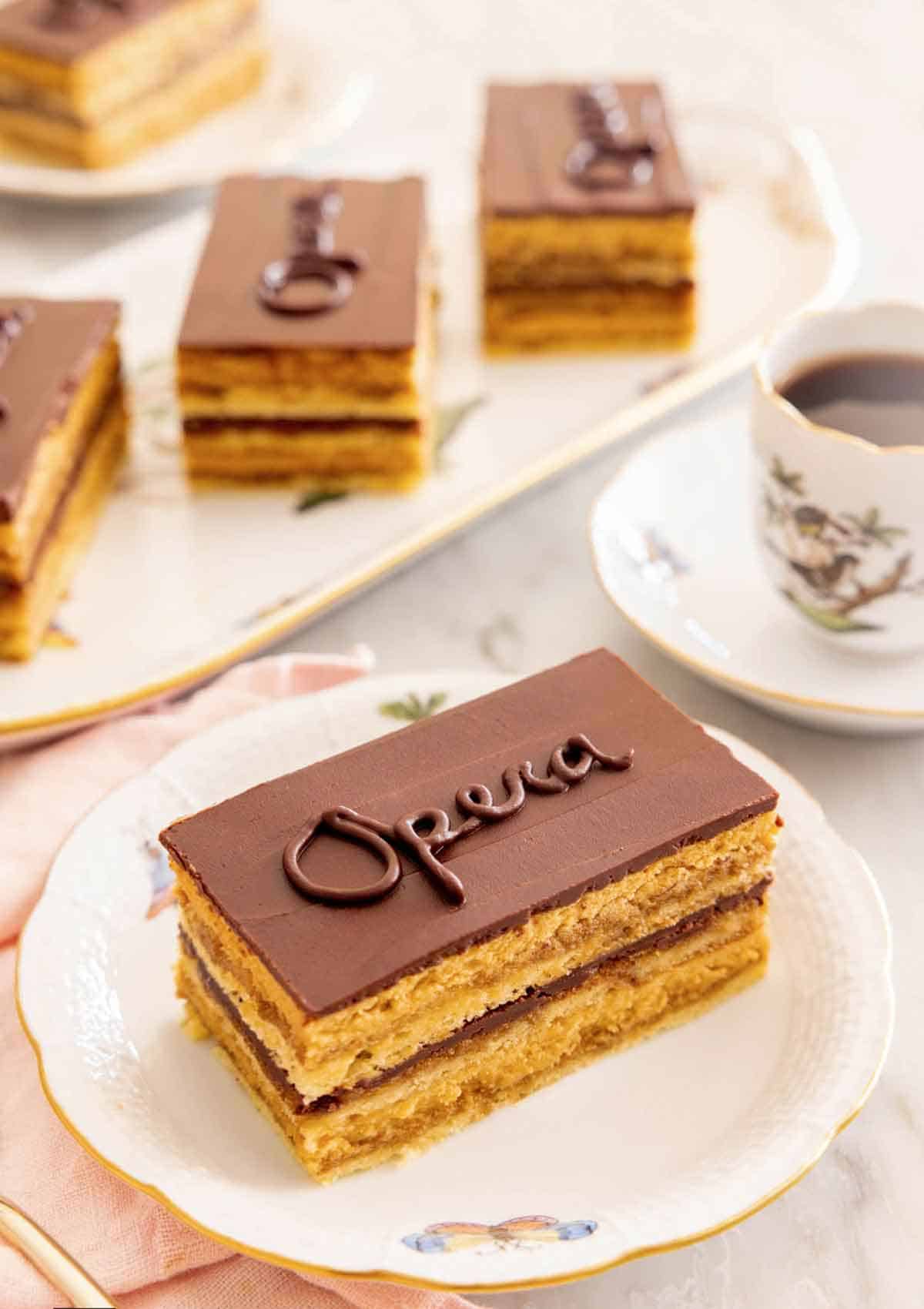
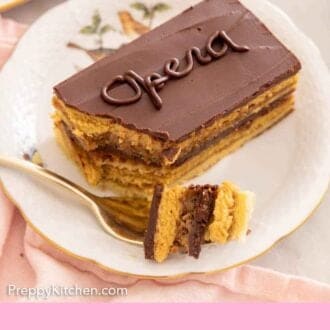
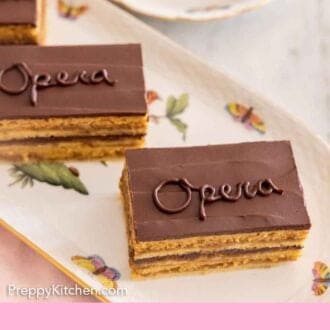
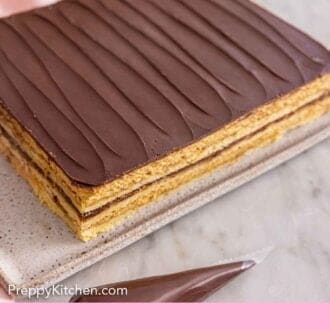
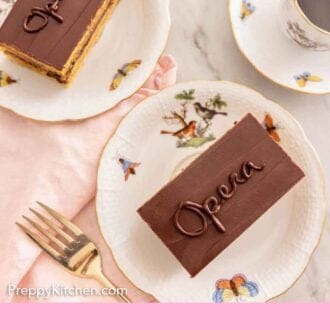
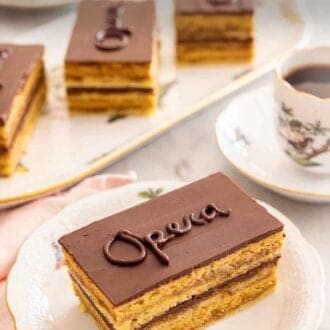
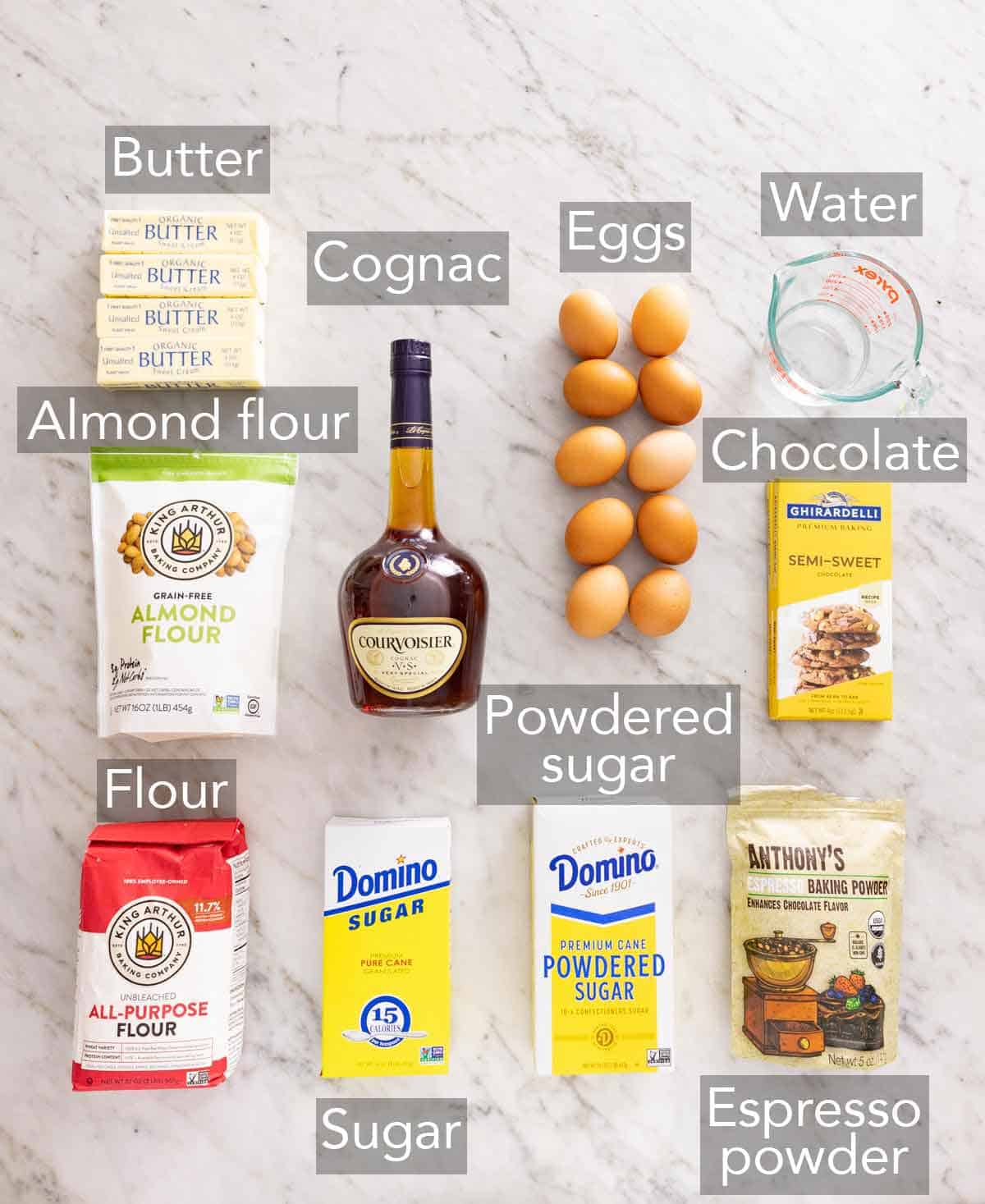
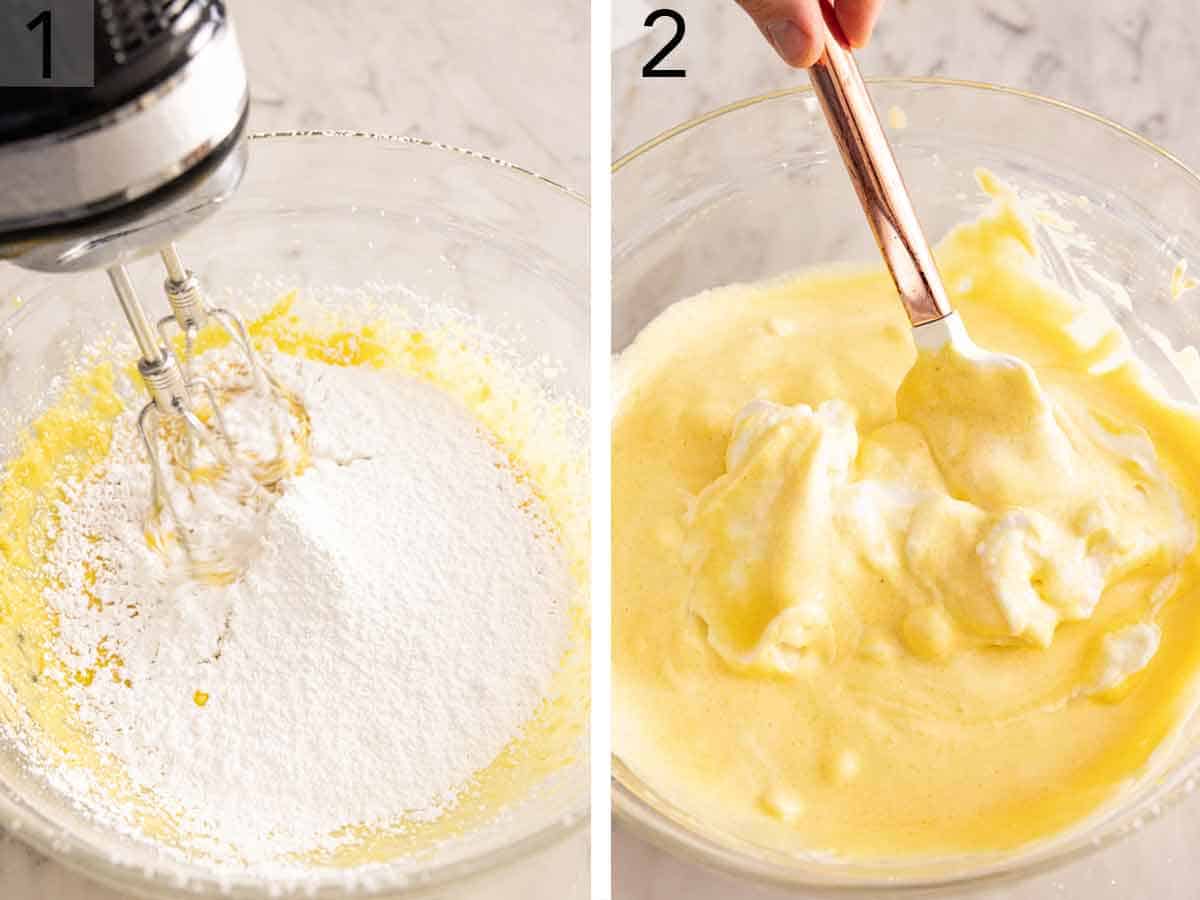

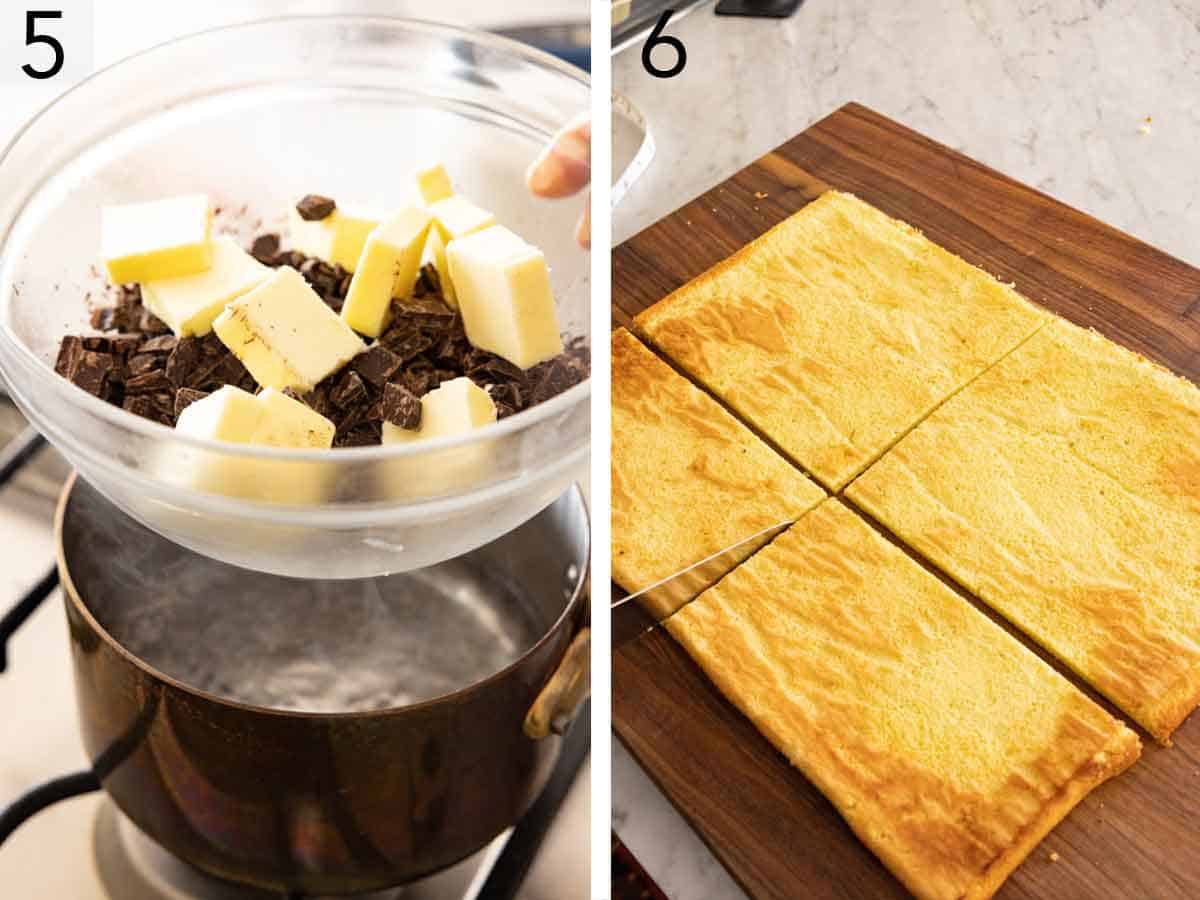
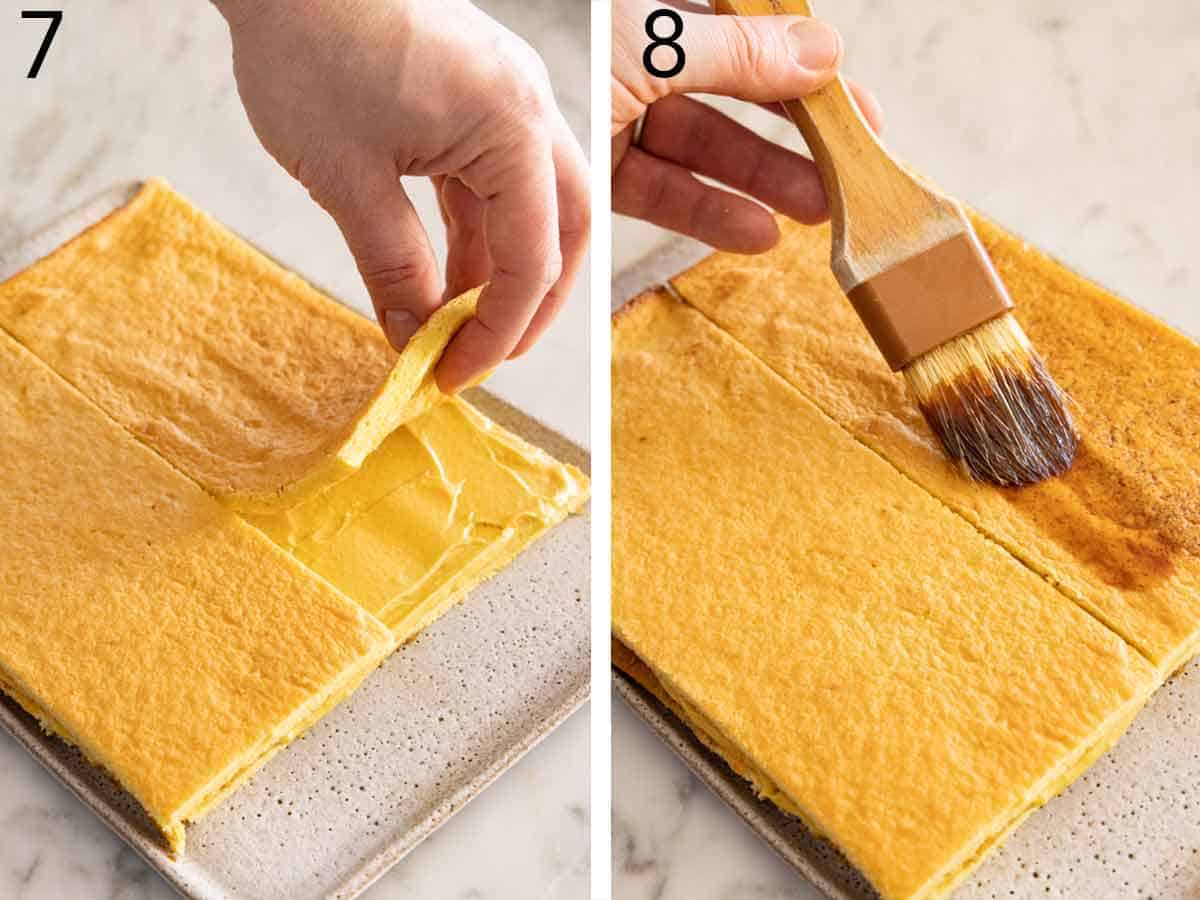
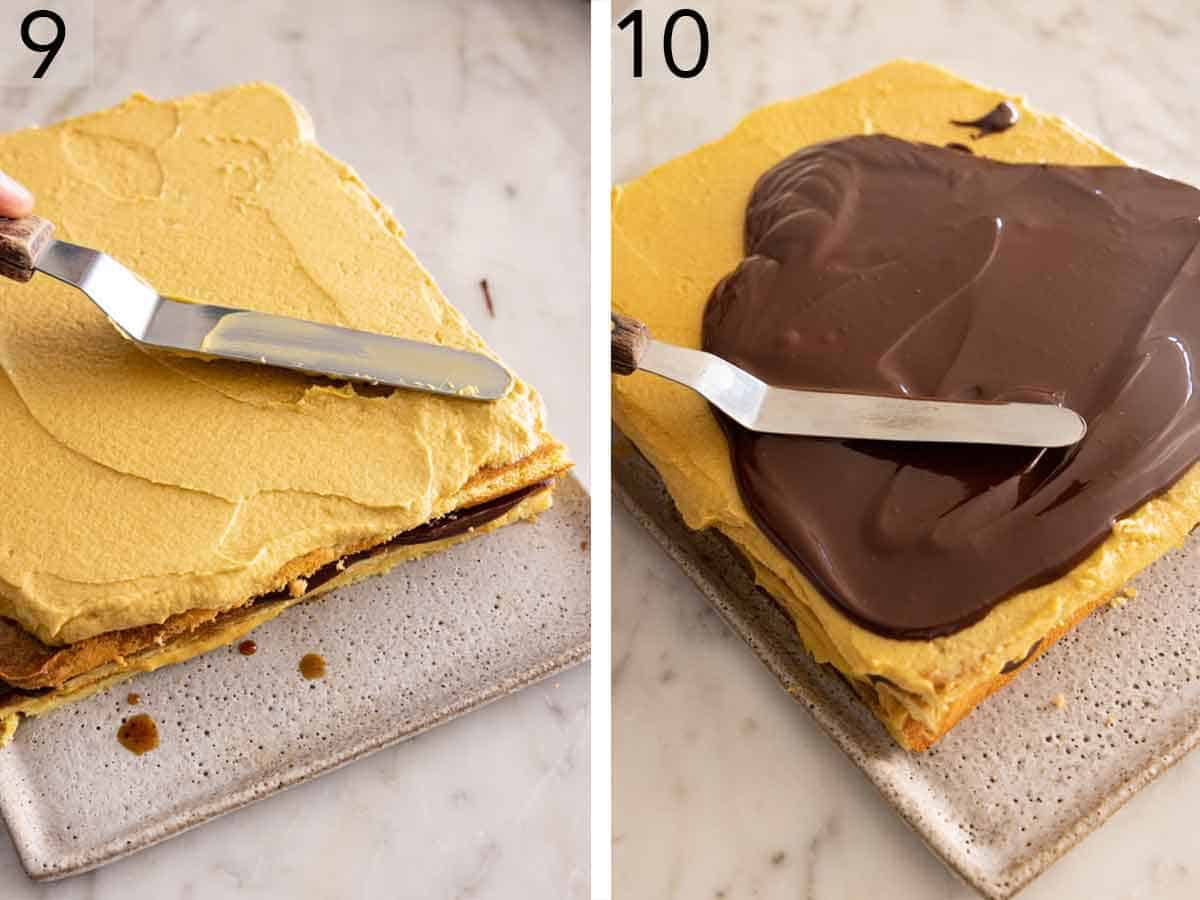

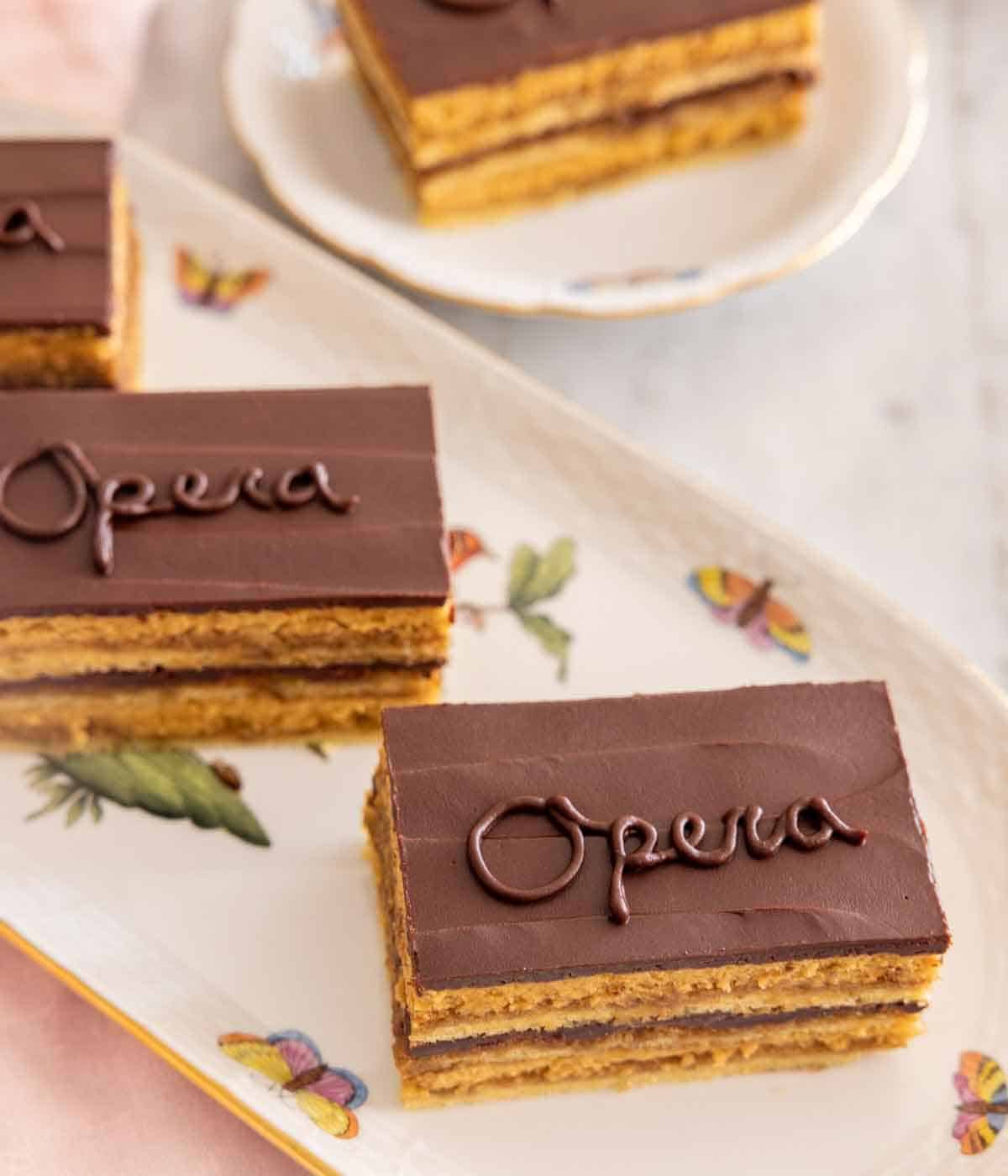

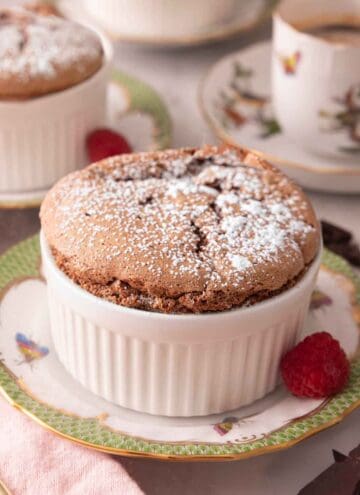

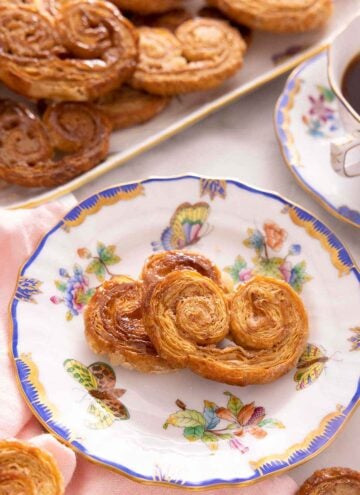

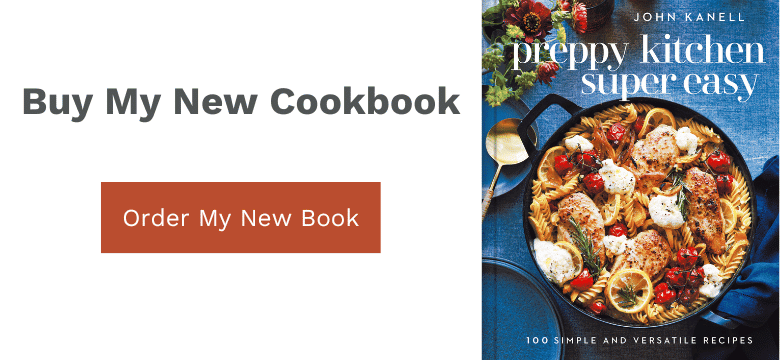
Leave a Reply